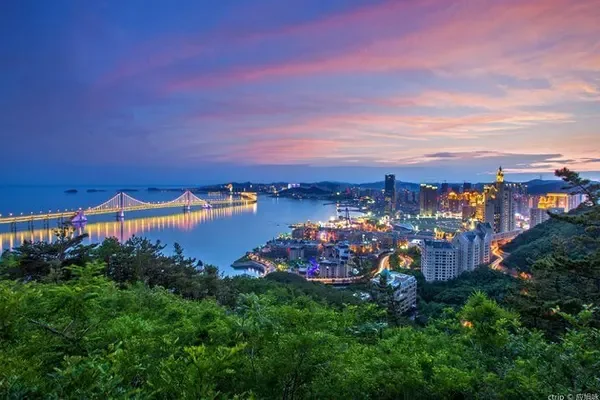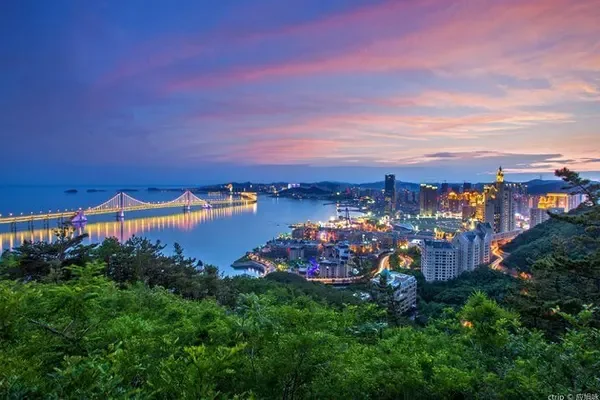
Arrived in Beijing on the afternoon of August 14, 2019, and went to Lugou Bridge after settling down.

The Marco Polo Bridge is an eleven-hole stone arch bridge built in the third year of Jin Mingchang (1192 A.D.). Later, the Ming and Qing dynasties repaired or rebuilt the Marco Polo Bridge.

As early as the Warring States Period, the area around the Lugou River Ferry was already an important traffic route for Yanji and a battleground for military strategists. After the completion of the Marco Polo Bridge, it became the only way for all southern provinces to enter Beijing in the Jin Dynasty, Yuan, Ming and Qing dynasties and an important gateway to Yanjing. The unique natural geographical environment also gave birth to beautiful scenery. Since the reign of Jin Zhangzong, "Lugou Xiaoyue" has been listed as one of the "Eight Scenic Spots of Yanjing". Of course, Marco Polo Bridge is most famous for the "July 7th Incident" that took place here on July 7, 1937. The Chinese Anti-Japanese Army fired the first shot of the all-out War of Resistance.
The last time I came to Lugou Bridge was nearly 30 years ago. I had a quick glance at Lugou Bridge and the ancient city of Wanping in the east of the bridge left a deep impression on me. This time I accompanied my wife and children to see the Marco Polo Bridge, and I took it easy.

Come to the east of Lugou Bridge, next to the bridge is the West Gate of Wanping.

When you walk to the Lugou Bridge, you can see the longest ancient stone bridge in North China. The bridge deck on both sides of the bridge is trumpet-shaped, and stone railings are set on both sides of the bridge deck. The entire bridge body is a stone structure, with silver ingots on key parts. Iron tenon connection.



On the north side of the east end of the bridge stands the "Lugou Xiaoyue" stele and stele pavilion inscribed by Qianlong of Qing Dynasty. Outside the stele pavilion stands a stele of rebuilding Lugou Bridge by Emperor Kangxi of Qing Dynasty.

There is a big stone lion on the top railings on both sides of the east end of the bridge, and there are also Chinese watches. The Huabiao is 4.65 meters high. There is an octagonal xumizuo under it, and a cloud plate stone on the top. A stone lion is carved on the rosette disc, facing the outside of the bridge with a calm demeanor, just like welcoming and seeing off pedestrians.


Walking on the Lugou Bridge, you can see that the bridge deck is slightly curved, with lower ends and a bulge in the middle. The piers, arches, pillars, railings, drum stones, and Huabiao are all built with natural quartz sandstone and marble, while the bridge deck is paved with huge natural granite stones.

After renovation, the middle section of the bridge deck still retains the original granite stone of the old bridge deck. Hundreds of years of people coming and going, the bridge deck has been worn out and uneven, not to mention the vicissitudes of history.









The most eye-catching thing about Lugou Bridge is the stone lion on the top of the bridge pillars. It is said that there are 281 pillars on both sides of Lugou Bridge (141 pillars on the south side and 140 pillars on the north side). , There are some small stone lions carved on the head, under the feet or on the back of the chest. According to records, there were originally 627 large and small stone lions on the lookout pillars of the Lugou Bridge, and there are 501 existing ones. These stone lions have been overhauled or refurbished many times. The stone materials and craftsmanship are good and bad.

There are exquisite floral patterns carved on the marble pillars and balusters of Lugou Bridge. The marble guardrail on the bridge deck is composed of lookout columns and 279 railings alternately, with 140 railings on the south side and 139 railings on the north side.








Going to the west end of the bridge, the decoration configuration is roughly the same as that at the east end, and there are also Huabiao. However, there are two large stone elephants on both sides of the top railing at the west end of the bridge. The details of the stone elephants are not very clear due to the age and wind and rain. On the north side of the west end of the bridge, there is also a stele for rebuilding Lugou Bridge by Emperor Qianlong of Qing Dynasty.


Come to the west end of the bridge and look at the Lugou Bridge from the north side. The plane of the bridge pier is in the shape of a flat-bottomed boat. The north is the upstream, which is the water inlet surface. At the front end of each water splitter, a triangular cast iron is installed, with the acute angle facing outwards, to reduce the impact of torrents and ice blocks and protect the stability of the water splitter. On the top of the water-dividing point, six layers of water-dividing stone slabs are built, called Fenghuang Terrace. The lower two layers are lifted out, and the upper layers are gradually retracted, which not only strengthens the stability of the water-dividing point, but also plays a role in the bearing pressure of the pier. It's the balancing act.



The south side of the bridge pier is along the water, and it is streamlined, shaped like the stern of a ship, to disperse the water flow and reduce the pressure of the flood on the coupon hole.

Leaving the Marco Polo Bridge, detour to the west bank of the Yongding River, where the long bridge looks like a rainbow and the river flows lightly. When I visited Lugou Bridge, the river under the bridge was dry and the riverbed was full of weeds. Times have changed, and the scene has improved a lot.


Return to Lugou Bridge and come to Wanping West Gate.



The city tower is 11.68 meters high, the wall platform is 9.6 meters high, and the overall height is 21.28 meters. The city tower and urn city are no longer the original ones, but were rebuilt in 1984, and the original city tower and urn city were demolished in 1958. Wanping West City Gate was originally named "Yongchang Gate" and later changed to "Majestic Gate".

Wanping has been the gateway to the south of Beijing since ancient times. Wanping City was built in the 10th year of Chongzhen in the late Ming Dynasty (AD 1637). The purpose of building this city was to guard the capital with soldiers. The Wanping County Office was located near the Drum Tower in Beijing. During the Republic of China, Wanping County was assigned to Hebei Province, and the Wanping County Office was officially moved here, so it was called Wanping City. Because Wanping City is a bridgehead and the Acropolis of Beijing, its shape and structure are different from ordinary county towns when it was first built. Inside the city, there are no streets, alleys, markets, bell and drum towers and other facilities in ordinary county towns, and there is only one main street. There are only two gates in the whole city, the east and the west, and there are urns and towers. The entire city wall is relatively thick and strong, which is mainly conducive to the defense of the capital. Wanping City is not big. It is said that the whole city is 640 meters long from east to west and 320 meters wide from north to south, with a total area of 208,000 square meters.

Enter from the west gate and walk towards the east gate. On both sides of the street, there is still a bit of the appearance of the ancient city of Ming and Qing Dynasties.



After walking along the street for about ten minutes, we arrived at Dongchengmen. The east gate is named "Shunzhi Gate". The gate opening is 4.5 meters high and 4 meters wide. The shape of the tower is the same as that of the west gate.


Exit the east gate and go south along the wall of Wanping City.

The city walls, towers, and urns were all rebuilt in 1984, but it can be seen that the city walls have generally maintained their original appearance. The foundation of the city wall is six layers of stone, with city bricks on the top. There are crenels and lookout holes on the outside of the city wall, and shooting holes on the bottom.




There are also enemy towers and towers on the city wall, and there are corner towers and towers at the four corners of the city wall. In the era of cold weapons, it was a city with complete defense equipment.



The bullet marks left by the provocative bombardment of the 29th Army guarding Wanping County by the Japanese cannons and machine guns on the night of July 7, 1937 can be seen everywhere on the walls of Wanping City. It is shocking and cannot be forgotten in history.


